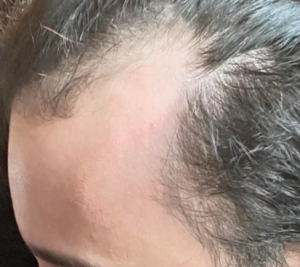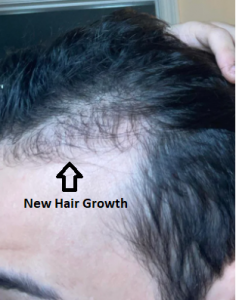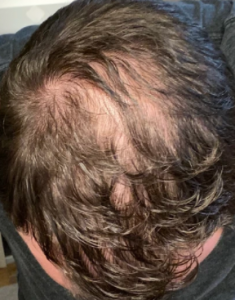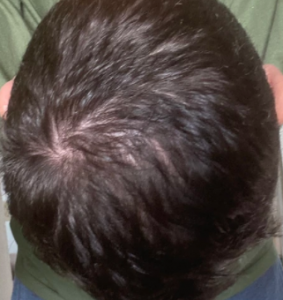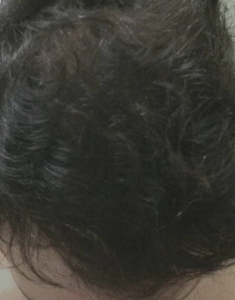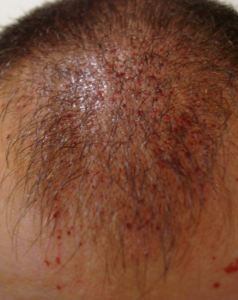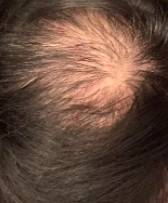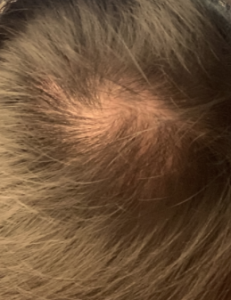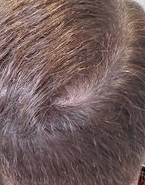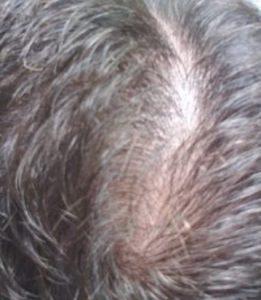Transplanting a Norwood Class 6 works provided that (1) your hair is not fine, (2) your donor density is average or better than average, and (3) are willing to have more than a single surgery to get there. I have performed hundreds of hair transplants on Class 6 and Class 7 patients.
Can Prolactin in a Male, Like a Spike over 6 months caused by a medication cause some loss? I’m curious. I still have a full head of hair, but was wondering about that.
Elevated prolactin levels in association with diffuse or androgenetic hair loss can be neglected as causative for the hair loss, because there is no evidence that they have an influence to the pattern
Thanks Dr. I know it is secured at day 10, but are the follicles still week? Could I have killed them from lack of sleep/nutrition and smoking/drinking?
Hair transplants are very resilient. They survive even if you haven’t slept for days. Just don’t pick them out in the first 10 days.
For anyone who has had a hair transplant or known someone who has, what was the experience like once returning to work? Did people ask questions? Was it super noticeable? My idea is that you just have to own it I guess, which sucks when working at major companies.
Most people can get away with a hair transplant never being detected. First you have to have all of the crusts washed off the first day so that there are no scabs on your recipient area, just a short beard. Second, if you are very bald, let your beard grow out so people will focus on your beard, or if you have a beard, shave it off. People pick up big changes and facial hair so let it grow to create big changes. The need for facial hair may not be required if you have some hair to use as cover. Be creative. Everyone I have done hair transplants made it work for them.
If you have a good libido, regardless of the cause, Viagra may help you. I have had men who had ED from finasteride and Viagra or Cialis seemed to solve their problem.
If you get a patient who is experiencing hair loss after an event like an illness or a diet change/weight loss or medication-related, how do you reverse hair loss in such cases? Is the hair loss medication the same?
First you tackle the cause like stabilizing weight loss with a good diet or treat whatever the illness was that precipitated the hair loss. Most of the time the hair loss will reverse unless, for example, weight loss induces genetic hair loss that was hidden from you. Then we use the standard medication for hair loss such as finasteride and/or minoxidil (topical or orally).
I am 13 days post FUE. On 11 days post FUE (Friday) I started taking some adderall at night and drinking. I ended up staying up all night then taking more adderall the next day until I passed out into Sunday. On Sunday I drank more. I smoked cigarettes as well. Did I kill all the transplanted hair? I don’t know what to do
At 13 days, everything should be secure. I doubt you damaged anything
Take a look at this photo. There is an area on the top that shows the normal density (click on the photo to enlarge) where hair was not removed hair by hair group as in the main donor area shows. It should be clear from this normal section of hair what a normal donor density looks like prior to an FUE being done. Donor site density reduction occurs in every hair transplant regardless of the technique. Depletion is used when the density reduction achieves a clinical state where there is less than adequate coverage for the donor area and as a result, one can either see-through it, or there is clearly less bulk present when the hair is grown out longer. I will discuss this below.
Donor site depletion is not necessarily a numbers issue. For example if one has 3500 FUE grafts removed from the donor area, is that number adequate to produce donor site depletion? In some men with a coarse hair, 3500 removed FUE grafts may not cause visual loss of coverage for the donor area with hair that is 1-2cm long. Likewise, 3500 FUE grafts removed for someone with fine hair will find significant donor site depletion with hair that is 1-2cm long. For someone with an average hair weight, 3500 grafts may be a reasonable limit before one sees donor site depletion with hair that is 2cm long.
Some surgeons do strip surgeries which also deplete the donor area. Assuming that there is no significant scar (less than 3mm wide) then the donor area stretches with removal of 3500 grafts. Assuming that the area where the stretches is spread over the entire scalp, it impacts the scalp in the back of the head and that the stretch extends upward from the point where the strip was removed to all of the remaining untouched hair in the back of the head. If the person had a full Norwood Class 7 pattern of balding, the 3 inches of scalp remaining will have a reduction of density that is 84% of its original density or a 16% reduction in density. The difference between the FUE surgery example and the strip surgery example would be in the uniformity of the donor site’s appearance. There would be no gaps in-between the follicular units in the strip scenario unlike the FUE scenario which clearly would have gaps rather than uniform stretching.
The two procedures are not really comparable because the surgeons often selectively remove the follicular units with more hair with FUE than the strip surgery (i.e. more 3-4 hair grafts). So the person with 3500 FUE grafts harvested from the 3 inch high donor area most likely will lose more hair from the donor area than the person who had 3500 grafts from the strip surgery. It is the hair bulk that is left behind that determine if there is donor site depletion and this is an individual call for each patient who has had any hair transplant surgery. The patient in the picture could be donor site depleted with the standard of 1-2cm long hair or not. I personally would like to see his hair grown out to a length of 2cm and then make a value judgement. Do you copy that?
Tomorrow I have a 1-year follow-up for a 1200 graft FUE. I’d say I’m 70% satisfied with my results, but my temples are not to the density I desire. With careful inspection you can still see my scalp. I’ve also been on fin for a year and have gotten pretty great results with density in my pre-existing hair (for those wondering: no sides).
I suspect the lack of temple density is due to him underestimating how many grafts I needed. I paid good money for this HT yet it’s not up to my expectations. What’s the best way to approach this issue with my doctor?
Remember, your surgeon works for you. If he was an employee, and you were not satisfied with his work, wouldn’t you tell him so. Any good doctor would want to know if his patient wasn’t happy and then take the steps to make his patient happy. Surgeons have the responsibility to set proper expectations during his consultation with you. That is my biggest job, to teach someone who doesn’t know much about hair transplants, what to expect from what I plan to do so address their complaints about their hair during the initial consultation.
At what point of hair loss did you either decide to do a treatment or throw in the towel to shave it off?
Both sides of my family have the bald gene and I started balding super early (like 15-ish) so I owned it at 17 and was on Team Shaved. No one seemed to care, had a girlfriend that liked it, and life went on. Fast forward 9 years and I’m now finishing up second bachelor’s degree and going into job interviews. Had an interviewer ask me about my experience and I told him about all the projects and internships that I was involved with. He followed up with, “well what did you do with the other years before going back to school?” Hinting that I look much older than 26. That was my “too bald moment.” So now I’ve been on fin/minox/keto/dermaroll and a biotin supplement for four months.
Balding is something you either accept or don’t. If you don’t accept it, a smart guy will find a good doctor who can build a Personalized Master Plan to follow the balding and if the goal is to keep the hair there, he will work that out with that doctor. Here is a man I started seeing over 2 decades ago, he was balding in the worst pattern of balding you can get, he wouldn’t accept that he had the money and the obsessive compulsive personality to make sure he kept his hair. His father was completely bald and I put a full head of hair on his dad, so he followed with me, had a hair transplant every few years as he was losing more hair and eventually stopped losing hair. Here are his photos after 11,000 grafts: https://baldingblog.com/norwood-class-7-pattern-patient-received-11000-grafts-plus-smp/
To get there you don’t have to be as wealthy as he is but it will still cost you a few dollars to do this. Be smart about your balding if you want to stop it from happening or get a hair transplant, otherwise, it is less expensive to accept it
Page 135 of 634

